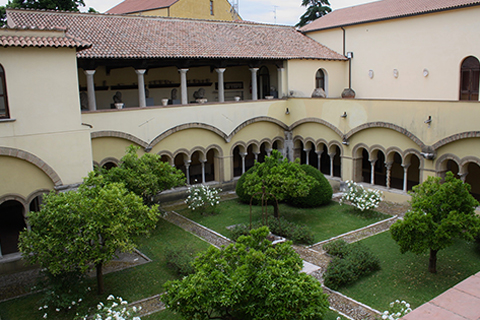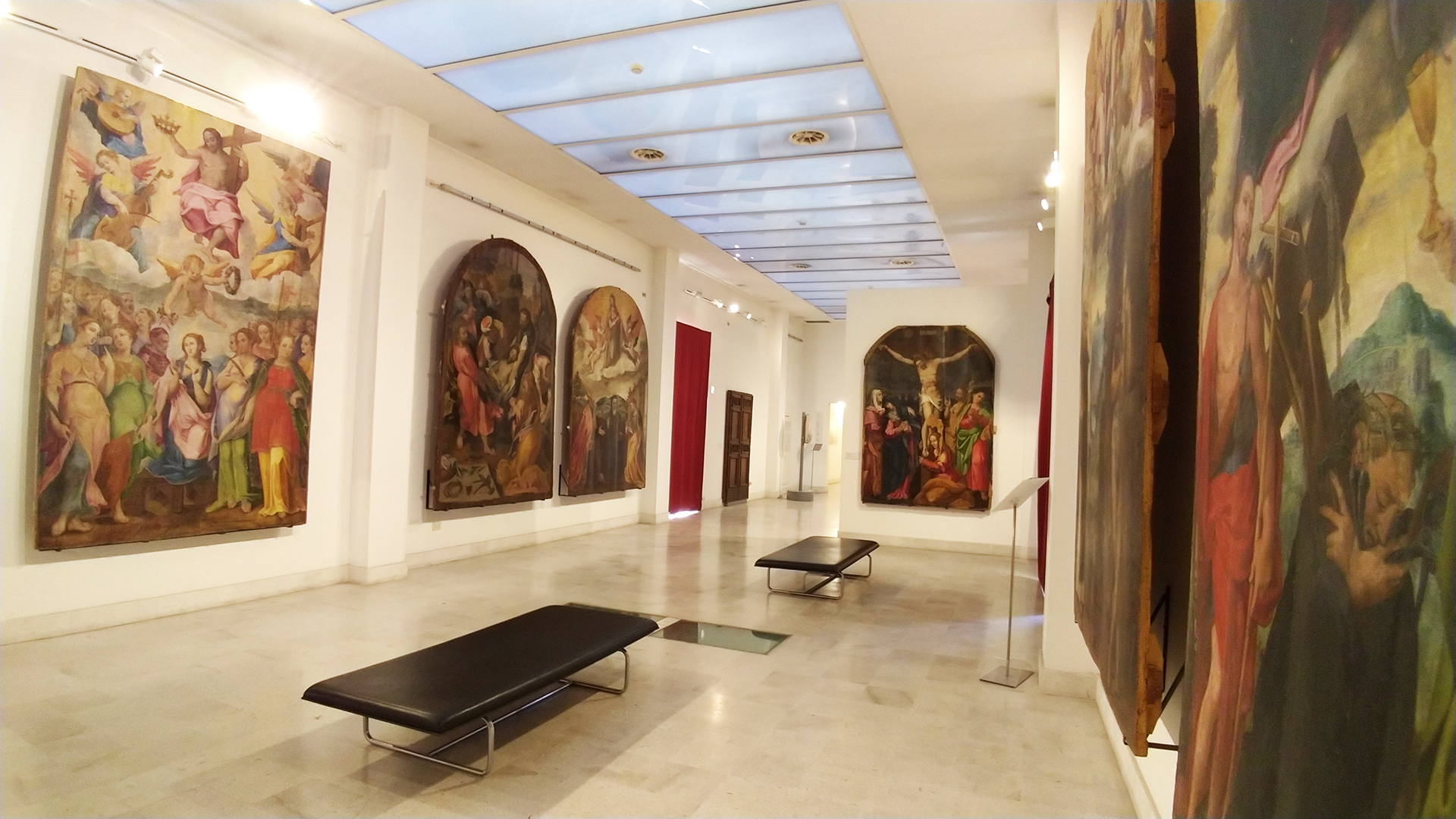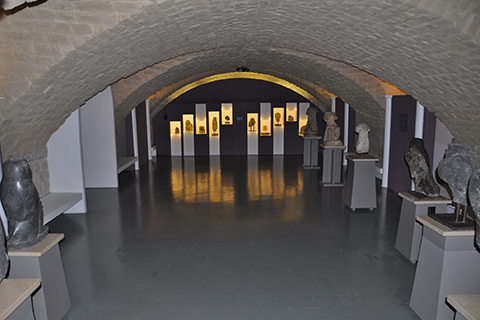


The first nucleus of the present Sannio Museum was a municipal archaeological museum founded in 1806 by Talleyrand, then Prince of Benevento, in the former Jesuit house. However, the governor sent by the prince, Louis De Beer, was mainly concerned with enriching his own and Talleyrand's private collections.

After the Restoration, the building was returned to the Society of Jesus, which reopened its college there, without however dispersing the archaeological material that had been collected there.
On 4 September 1873 the province founded the new Sannio Museum, intended to collect the materials kept in the Jesuit College, the scattered ones gathered by the municipality starting from 1865, also purchasing works in the possession of private individuals, and other material from the provincial territory. In 1893 a first grouping of materials was housed in the Rocca dei Rettore, by Almerico Meomartini.
Curated by Alfredo Zazo, in 1929 the collections were transferred to the monumental complex of Santa Sofia, purchased by the provincial administration as the seat for the museum and for the historical archive and the library, while the historical section remained at the Rocca.

After the Second World War the material grew considerably due to the discoveries made during the clearing of the rubble caused by the bombing. In the early sixties, Mario Rotili reorganized the museum according to modern criteria, and in 1964 it was recognized as a "large museum". In 1973 Elio Galasso became its director, who expanded the museum and inaugurated a research program that made the museum a national example. The Director Galasso also opened the Museum to contemporary culture (painting, installations, theater, music), and made the institute a multifaceted cultural center, hosting regular musical reviews (especially piano concerts), exhibitions and conferences.
In 1999 the restoration works of the cloister of Santa Sofia and of the Museum were completed based on a project by the architects Ezio De Felice, Eirene Sbriziolo and Roberto Fedele.
UNESCO World Heritage Site since June 2011
The precious cloister of the Church of S. Sofia is a rare example of medieval art in which the capitals, columns and pulvini stand out which, through particular symbols, recall the contrast between good and evil, the succession of the seasons and the various eras historical.
Sannio Museum
Address: Piazza Matteotti, 5/A,
Phone: 0824.774763
Site:
http://www.museodelsannio.it/Location inserted by
Annalisa Giordano